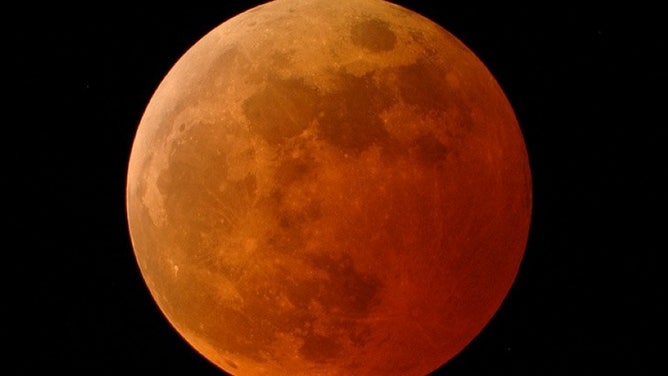Why does the moon turn red during a lunar eclipse?
The reddish glow is the projection of all of the sunrises and sunsets happening on Earth at that moment onto the lunar surface.

A lunar eclipse
(NASA)
Millions flock to the path of total solar eclipses to see the sun completely blacked out by the moon.
But when it's the moon's turn to be eclipsed, it's not a total blackout but instead there remains a faint glow of red or brown, sometimes called a "Blood Moon." How does it get such a dramatic reddish color?
Why does the moon turn red during a lunar eclipse?
Explainer on Lunar Eclipses
"If you go outside at night and you see the sun set and the sky turns red or you get up early and the sunrise turns the sky red -- all of that red color is passing through the Earth's atmosphere," said Dr. Noah Petro, Project Scientist with NASA's Lunar Reconnaissance Orbiter. "When the moon passes into the shadow of the Earth during an eclipse, that red from the Earth's atmosphere is projected onto the surface of the moon."
Simply put: The reddish glow is the projection of all of the sunrises and sunsets happening on Earth at that moment onto the lunar surface.
"So it's a really beautiful connection between the two bodies," Petro said.
What's a #LunarEclipse? A lunar eclipse occurs when the moon passes directly behind the Earth into its shadow. pic.twitter.com/rTYErqL5WD
— NASA (@NASA) September 27, 2015
And the best part is, unlike a solar eclipse when you need special eye-protection equipment to observe the show, a lunar eclipse is safe to look at with just your eyes -- or better yet with binoculars or a telescope.
The next lunar eclipse visible in North America will be on May 15-16, 2022 , followed by another chance on Nov. 8. After that, it's a three year wait until March, 2025 for the next chance.
"They happen regularly all over the Earth but for you to see one from your backyard becomes a nice opportunity," Petro said. "So when those do occur, you definitely don't want to pass those up."
